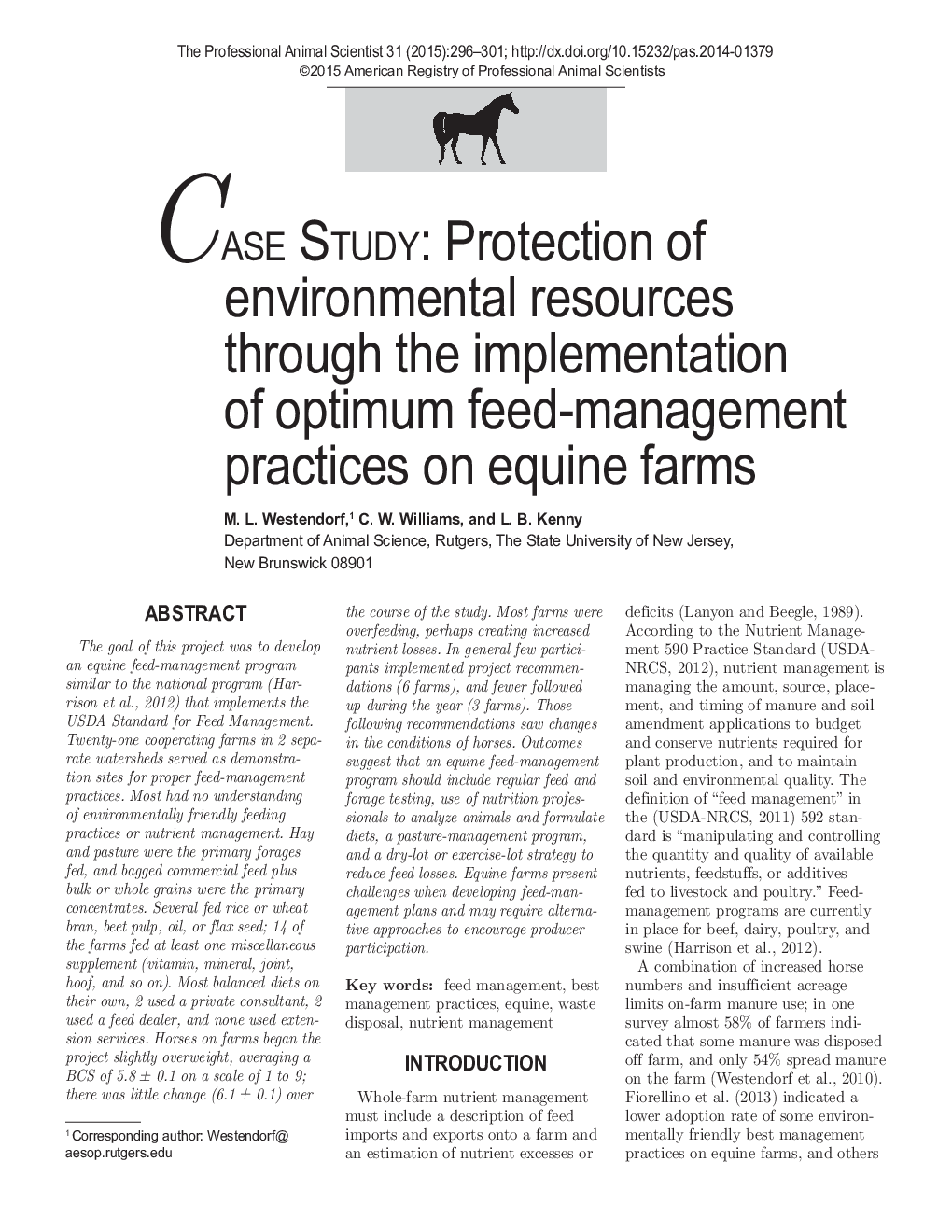| Article ID | Journal | Published Year | Pages | File Type |
|---|---|---|---|---|
| 10161825 | The Professional Animal Scientist | 2015 | 6 Pages |
Abstract
The goal of this project was to develop an equine feed-management program similar to the national program (Harrison et al., 2012) that implements the USDA Standard for Feed Management. Twenty-one cooperating farms in 2 separate watersheds served as demonstration sites for proper feed-management practices. Most had no understanding of environmentally friendly feeding practices or nutrient management. Hay and pasture were the primary forages fed, and bagged commercial feed plus bulk or whole grains were the primary concentrates. Several fed rice or wheat bran, beet pulp, oil, or flax seed; 14 of the farms fed at least one miscellaneous supplement (vitamin, mineral, joint, hoof, and so on). Most balanced diets on their own, 2 used a private consultant, 2 used a feed dealer, and none used extension services. Horses on farms began the project slightly overweight, averaging a BCS of 5.8 ± 0.1 on a scale of 1 to 9; there was little change (6.1 ± 0.1) over the course of the study. Most farms were overfeeding, perhaps creating increased nutrient losses. In general few participants implemented project recommendations (6 farms), and fewer followed up during the year (3 farms). Those following recommendations saw changes in the conditions of horses. Outcomes suggest that an equine feed-management program should include regular feed and forage testing, use of nutrition professionals to analyze animals and formulate diets, a pasture-management program, and a dry-lot or exercise-lot strategy to reduce feed losses. Equine farms present challenges when developing feed-management plans and may require alternative approaches to encourage producer participation.
Related Topics
Life Sciences
Agricultural and Biological Sciences
Animal Science and Zoology
Authors
M.L. Westendorf, C.W. Williams, L.B. Kenny,
